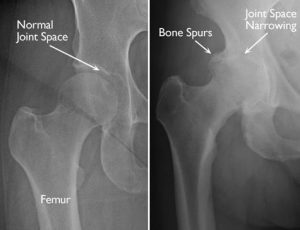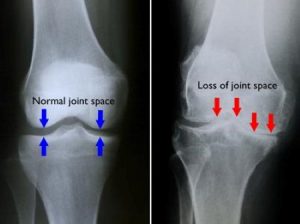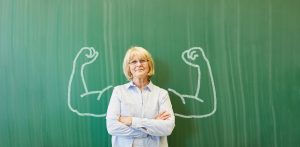Osteopathy and Getting Older
Find out about how osteopathy can help us all as we grow older.
Age-Related Osteopathy
As we age, our body undergoes a series of physiological changes to our muscles, ligaments, bones and joints. Osteopaths spend four to five years training to gain an understanding of the relationship between soft tissue structures, nerves, joints, blood supply and even our internal organs. Some of these relationships change as we age, and as osteopaths we are in a unique position to help keep you healthier, allowing you to continue or adapt your lifestyle as these changes manifest.
It is important to remember that painkillers are not the only solution for the aches and pains associated with ageing. Osteopathy can also help to reduce pain and stiffness and therefore reduce reliance on medication. We use a wide range of gentle techniques that will be personalised to suit you and keep your joints loose and mobile.
How are our bones affected by ageing?
The most common conditions to effect our bones as we get older are osteoarthritis and bone density loss (osteoporosis).
Osteoarthritis mainly affects joints that are both weight-bearing and very mobile. The most commonly affected are:
- Neck
- Lower back
- Hips
- Base of thumb
- Ends of fingers
- Knees
- Big toes
At some point in our lives we have all experienced some sort of trauma, ranging from unexpected trips or falls, car accidents or even sporting injuries. These injuries can make joints less robust and more susceptible to osteoarthritis in later years. Many other factors can also lead to an increased risk of osteoarthritis. It’s often a mixture of these contributory factors that leads to the actual condition itself:
- Age Osteoarthritis usually starts from our late 40s onwards. We don’t fully understand why it’s more common in older people, but it might be due to our muscles weakening and our body being less able to heal itself, or simply our joints slowly wearing out over time.
- Gender For most joints, especially the knees and hands, osteoarthritis is more common and more severe in ladies.
- Obesity Being overweight is an important factor in causing osteoarthritis, especially in your knees. Once present it also increases your chances of osteoarthritis becoming steadily worse.
- Joint injury An injury (or operation) on a joint may lead to osteoarthritis in that joint later in life. Normal activity and exercise don’t cause osteoarthritis, but doing very hard activities over and over, or physically demanding jobs, can increase your risk.
- Joint abnormalities If you were born with abnormalities or developed them in childhood, then this can lead to earlier and more severe osteoarthritis than usual. Perthes disease of the hips is a good example.
- Genetic factors Nodal osteoarthritis, which particularly affects the hands of middle-aged women, runs strongly in families, although it’s not yet clear which genes are involved. Some rare forms of osteoarthritis which start at an earlier age are linked with genes that affect collagen (an essential part of the cartilage that lines your joints). Genetic factors play a smaller but still important part in osteoarthritis of the hip and knee. Arthritis Research UK has recently funded a grant into unravelling the genetic causes of osteoarthritis.
- Other types of joint disease Sometimes osteoarthritis is a result of damage from a different kind of joint disease, such as rheumatoid arthritis or gout.
Osteoporosis, meanwhile, is characterised by loss of bone density, as most of us already know. This is defined by the World Health Organisation as bone density more than 2.5 standard deviations (SD) below average.
Values between 1-2.5 SD below average are termed osteopenic. Bone density decreases with age. In men this occurs slowly, reaching a fracture level risk in the seventies and eighties. In some women, however, there can be an accelerated loss in bone density following the ten years after menopause, leading to a substantial risk of fracture. Risk factors include alcohol, smoking, family history, lack of exercise, age and early menopause. Pain from osteoporosis often occurs because of small fractures in the vertebra causing corresponding spinal pain.
How are our muscles affected as we get older?
As we age so do our muscles, something that we tend to forget as we normally associate ageing specifically with bony structures. When muscles age they begin to atrophy (waste) and there is a subsequent loss of mass or muscle bulk (this is called sarcopenia). This is essentially just a natural phenomenon related to physiological ageing, but it is important to remember that sedentary lifestyles can accelerate the process.
The total quantity and size of muscle fibres generally begins to decrease with age. This decrease in muscle tissue begins around the age of 50 years and becomes more obvious into our sixth decade. Loss of muscle mass has a direct relationship with proper muscle function, hence the higher incident rate of heavy falls in later life. Some of the reasons for this are:
- Denervation of the motor nerves that supply the muscles results in the loss of motor units and thus the total number of muscle fibres.
- A decrease in the production of anabolic hormones such as testosterone, growth hormone and insulin-like growth factor-1 also impairs the capacity of skeletal muscle to incorporate amino acids and synthesise proteins.
Unfortunately, it also takes muscles longer to respond and adapt to loads and stresses in our 50s than they it did in our first few decades of life. The water content of muscle tendons, the cord-like tissues that attach muscles to bones, also decreases as we age and they then become less plastic. Examples of this can be seen by referring to our general conditions pages: with conditions such as degeneration of the rotator cuff tendons (these muscles are important in stabilising the shoulder joint). Age makes the tissues stiffer and less able to tolerate the stresses that we impose upon them. An example would be hand grip strength, which will decrease, making it more difficult to undertake daily activities such as opening a jar or turning a key.
There are some measures that we can all take to reduce these effects:
- Stretching is a really excellent way to help maintain joint flexibility and some of the techniques we use in osteopathy are aimed at specifically increasing joint mobility.
- Resistance exercises or weight training can help to increase muscle mass and strength and there is some evidence that long-term regular exercises may slow the loss of muscle mass and prevent age-associated increases in body fat. Exercise also helps maintain the body’s response time, as well as its ability to deliver and use oxygen efficiently. Just 30 minutes of moderate activity, incorporated into your daily routine, can provide health benefits. We can advise you on a specific range of exercises to both stretch and strengthen any joint or muscle in the body to incorporate into a daily routine.




